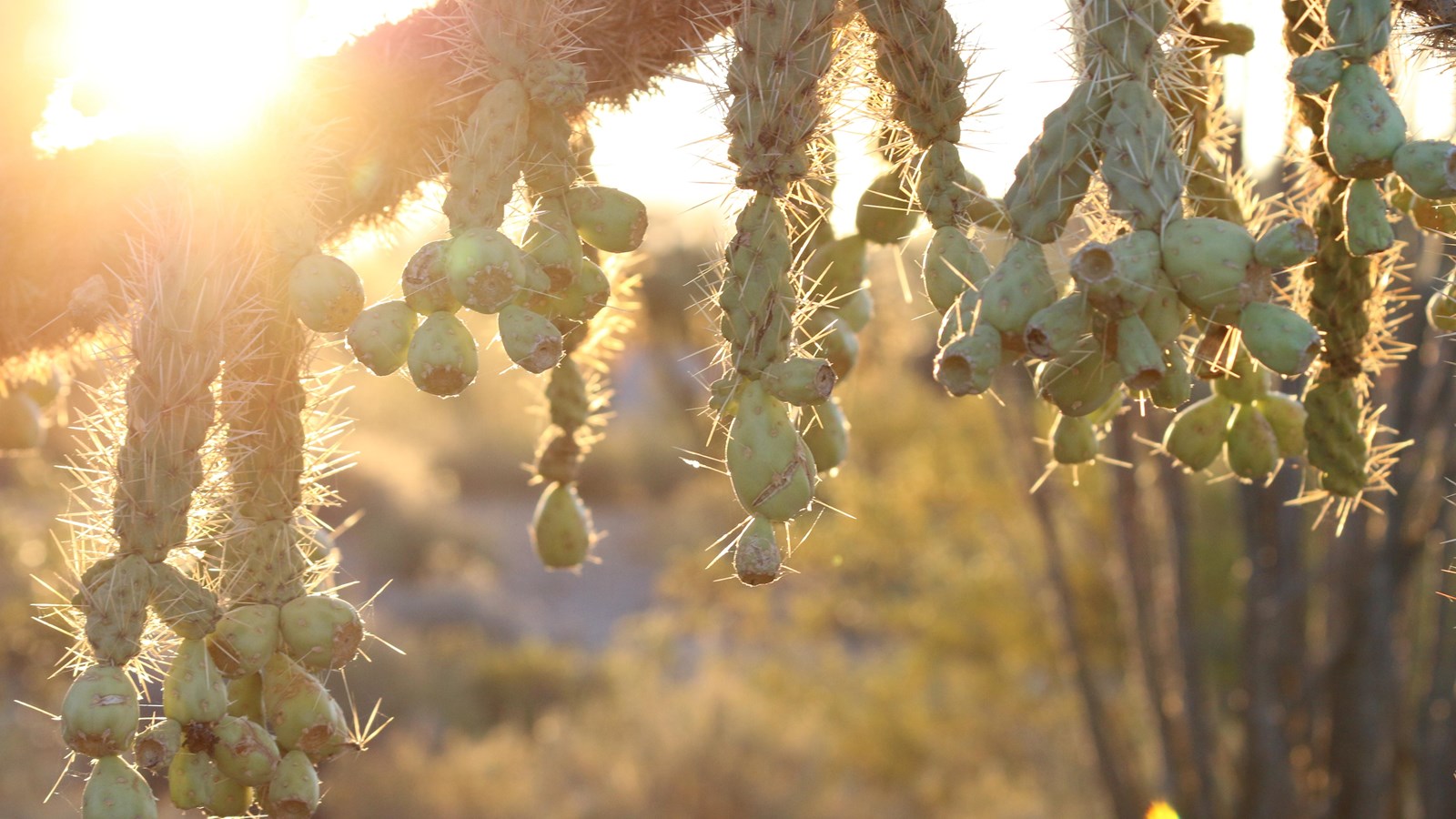Last updated: June 18, 2021
Place
Ajo Mountain Drive Stop 16

NPS Photo/ K Ceballos
Stop 16
A Forest of Spines
All around you is a small “forest” of pale yellow, tree-shaped cacti called chain-fruit cholla. They are called chain-fruit because fruit-upon-fruit hang down, creating long chains. The joints of the plant are biologically designed to detach as an animal is walking by within its spiny reach. The spines are barbed and hook into the coat or flesh of the passer-by and the cholla joint is transported to a new location. If the conditions are favorable where it falls, the cholla joint might grow into a new plant. This cactus is sometimes referred to as a “jumping cholla” as the cholla joints seem to jump off the plant and attack unsuspecting passers-by. Reality is they don’t jump; they are just very efficient at picking up a ride. As you can imagine, picking up these hitchhikers is painful. Adapt your habits to the desert by using caution and carrying tweezers to remove any cholla joints when you are out walking.
You may be surprised to learn that some birds will take up residence in these cacti; the spines prove some defense against desert predators. As you continue, look for cactus wren nests; they resemble football-shaped clumps of weeds with a side hole big enough for the birds to go in and out.
